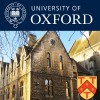Writing and circulation: a Material Approach to Early Modern Marathi Literature
This paper attempts a reconstruction of networks of circulation of early modern Marathi literature. It examines the manuscript archives of the Ramdasi sampradaya, which the early-twentieth-century historian Shankar Shrikrishna Deo collected from various Ramdasi mathas in Maharashtra and beyond, and which are currently housed in the Samartha Vagdevata Mandir in Dhule. The Ramdasi sampradaya, which counted primarily Brahman scribes among its followers, emphasized the daily labours of writing as part of its devotional discipline. It generated a large manuscript corpus of Marathi poetry, including Varkaris, Ramdasis, as well as the so-called Panditi poets of the seventeenth and eighteenth centuries.
South Asian literary historiography has foregrounded the material contexts of literary practice on the one hand (such as Sheldon Pollock’s framework of script mercantilism), and its multilingual, multiscriptual environments (for example Francesca Orsini’s catchphrase ‘the multilingual local’). The Ramdasi materials – in pothi and bada formats, in mostly Nagari but also occasionally Modi script, in many languages besides Marathi, and from diverse literary traditions - provide a rich empirical standpoint from which to engage with this historiography and its methodological arguments.
Focusing in particular on the circulation of Panditi poetry, and on the “multilingual local” of Thanjavur, I suggest that Ramdasi networks of kirtan performance and devotional copying came to serve as critical nodal points in interactive circuits of text and performance, linking devotees and poets of different stylistic and devotional persuasions, as well as their extended administrative patrons and dependents in Marathi as well as other languages. They were critical to the making of an enduring manuscript archive, and allow us to picture an emergent Marathi literary public that was at once local, trans-regional, and multilingual, sustained through particular skill-sets of oral, literate, and performative skills.




